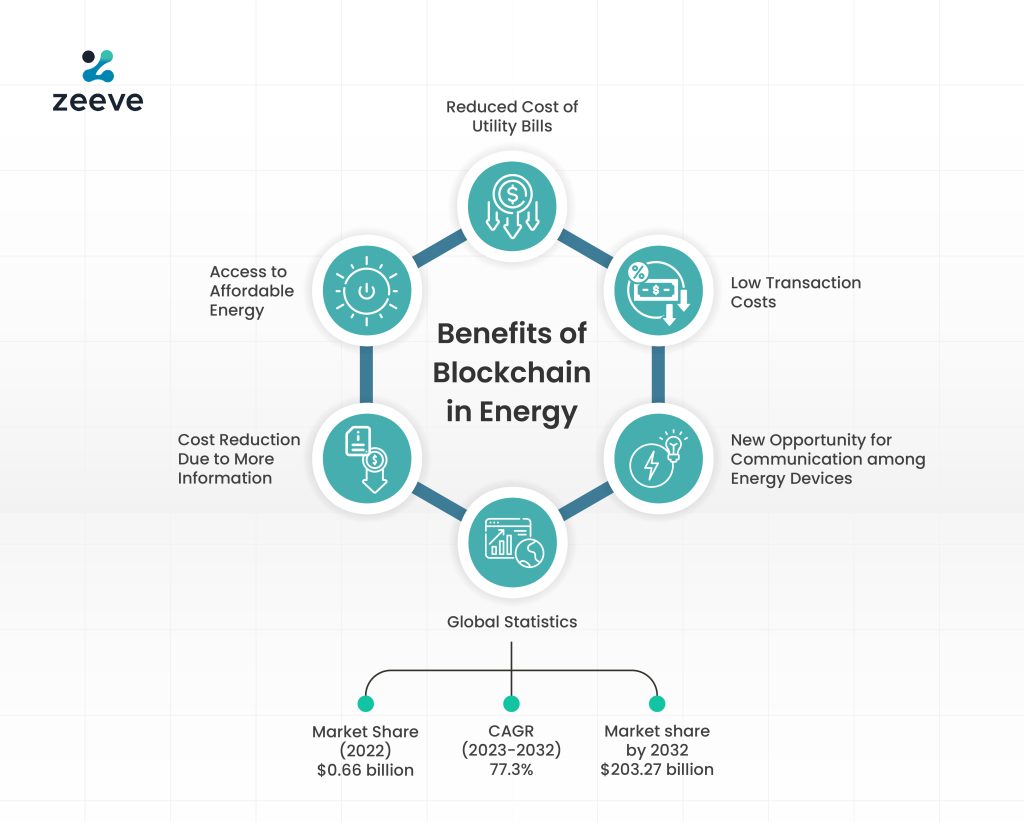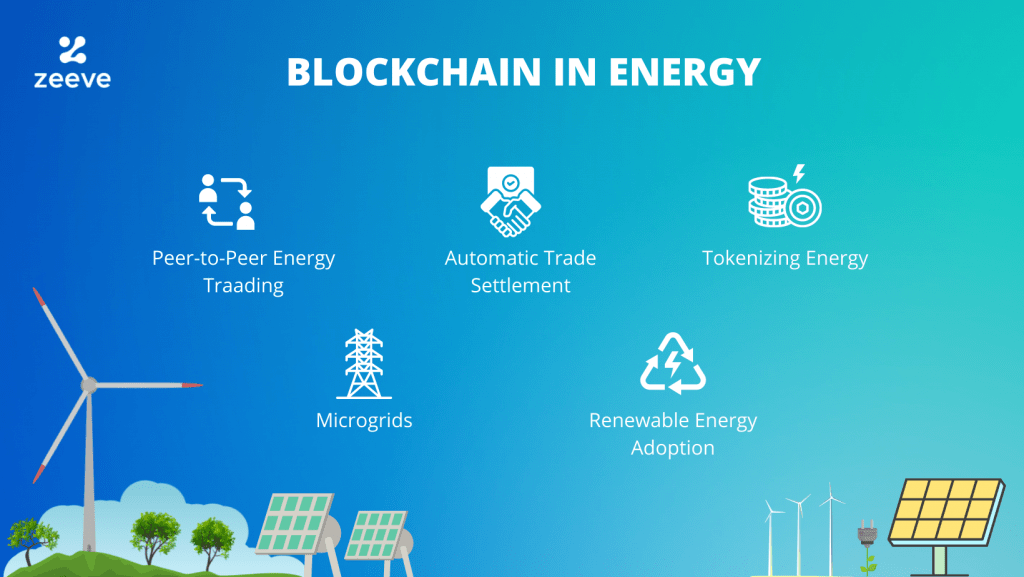
Why must the energy sector embrace blockchain now?
The World Energy Council defines that the energy sector can remain robust and sustainable in the long run if they solve three key problems: (i) Energy Security, (ii) Energy Equity, and (iii) Environmental Sustainability of Energy Systems. However, complexity in the sector like lack of transparency, challenges of interoperability, monopoly, regulations and data security have prevented this from happening. But after the dawn of decentralized ledger technology, the energy sector is at the cusp of witnessing a transformation like never before.
What decentralized ledger technologies intend to do for the energy sector?
DLTs/Blockchain solutions have shown an industry-agnostic approach to revolutionizing or disrupting businesses through transparency, immutability, decentralization, and allowing sectors to interoperate by getting access to actionable intelligence which have so far remained siloed under various layers of security, protection and sovereignty. As a result, once the energy sector embraces blockchain technology, the following benefits shall follow;
- Cost Reduction by eliminating intermediaries
- Sustaining environment through carbon credits
- Enhancing transparency through digitization
- Stimulating demand & supply & Job Creation through a shared economy
- Dilution of Control In the Hands of Few Players in the Industry Through Distributed Electricity Generation

How the above things are occurring via blockchain in energy sector
Decentralized Distribution
Through the use of blockchains, it is possible to set-up a decentralized distribution system which shall eliminate intermediaries and enable energy wholesalers to directly communicate with the customers. The model has already been deployed by Grid+ which has utilized retailers as a contributing force in electricity production and distribution.
For example, in the present system, retailers have no active role to play if they have considerable electricity saving that they do through using solar panels for producing electricity. However, through the introduction of IoT devices and smart-meters, these retailers/prosumers can contribute to the supply-side without threatening the sovereignty of the key players in the energy sectors. Hence, it is possible to save a lot of cost, resort to greener ways of manufacturing electricity and participating in a global marketplace through the use of blockchains and tokenization.
Furthermore, It has been seen that those households that have used blockchain based platforms to supply electricity to the grid have witnessed a staggering 40% reduction in their bills. In this way, they are not just contributing to building a greener tomorrow but also harnessing the possibility of opening a new passive income stream.
As a result, smart-grids are a new way forward where consumers are using smart-meters which act as a point of contact between consumers and Distribution System Operators. Since smart-meters are placed on the blockchains for tracing and tracking purposes, they essentially maintain complete track of transactions. Moreover, they also actively play a role in the DGS or Distributed Generation System that measures the production of electricity from various households and distribution of the same in demand-driven areas, where the supply-demand paradigm isn’t balanced.
In this way, available resources are being used at the load’s end to eliminate additional costs of setting up power generation units and aiding in the distribution of the supply. Hence, blockchain is helping in stabilizing power supply with existing power infrastructure which hasn’t been tapped to its true potential so far. This practice is getting adopted in the US, Brooklyn region, where residents are using the Ethereum blockchain for trading surplus electricity that they are producing through their solar panels and other means.
Ease of Entry
Through the use of blockchains, energy providers can set-up a proper distribution path that they had always wished for but couldn’t do because of the threat of compromising data and challenges in getting their accounts settled. However, once blockchain is in place, it completely changes the equation in the following ways;
As seen from the above image, the old-set required brokers and energy companies; however, once blockchain comes into the picture, the market becomes wider and easily accessible with very little challenges of entry and exit. Furthermore, it can also help smoothen the electric mobility market where the government can actively encourage small players to undertake the job of setting up EV power-stations.
The use of blockchain can simplify the billing process which shall be triggered by smart-contracts. Which boils down to, for example, anyone can get into the EV-charging business with very limited capital and operate on top of the blockchain to collect bills and perform diverse functions through IoTs. In this way, not just helping in expanding the network but also stimulating job creation in electric mobility will be triggered at the hands of the blockchain technology.
Perfect Competition
The present distribution model in the energy sector involves producers, distributors, government regulatory measures and much more, which seemingly make the distribution network complex, allowing big players to enjoy a clear upper-hand. Why? Because when you are going for a legacy system, in that case, the distribution channel is complex requiring licensing, regulatory compliances and much more which simply discourages perfect competition in the market. Hence, higher cost of electricity production and lesser competitiveness in the market.
However, when you replace the same system with blockchains, in such a case, aggregated grid management can occur and the participants will also not be wary about security since blockchain will ensure transparency, immutability and automated transactions based on demand.
Price fixation and discoveries could be triggered automatically by smart-contract and settlements could be instantly done through tokens. In this way, it gives more room for small players and even retail prosumers to actively participate in the distribution model and contribute to checking only a few players dominating the market. Moreover, when supply-demand can be fulfilled through sustainable electricity production instead of coal-fired, which small households would use, it would help in protecting the environment as well.
Authenticating Carbon Credits
Producers in the energy sectors have been heavily disturbed by regulatory practices where governments have imposed strict penal measures if they breach specific guidelines. At the same time, the Energy Outlook Report suggests that from 2010 to 2040, the demand for electricity shall be rising by almost 56%. To cope up with the demand, the players in the energy sectors must find a way out that remains sustainable and justifiable, VCM is a great way forward. VCM or Voluntary Carbon Market allows higher emission producers to purchase carbon-credits from low emission producers to keep their production momentum in swing. However, in the traditional carbon credit market, it is very difficult to identify the signal from the noise.
Why? Shady practices prevail. For example, The European Union Trading System has been the biggest victim of fraudulent trades at the hands of the carbon credit supplier. In the past 18 months, they have incurred a loss of € 5 billion. Blockchain technology can easily validate the double spending scams these carbon credit providers have used extensively to cheat consumers.
A battled-tested MRV system that does the monitoring, reporting, and measurement in a fully verifiable manner would be a great addition when it comes to setting up a check and balance mechanism in checking legit carbon credits.
How can blockchain be implemented in the energy sector?

To Learn more, read this article: Use Cases of Blockchain in the Energy Sector
Conclusion
Energy sector is ripe for innovation when you look at regulations which have created obstacles for the players to grow and thrive. Through the use of blockchains, not just we are at the cusp of witnessing a sharing economy benefitting all players: (small or big), but we are also going to witness more inclination of developed economies to look forward to greener ways to undertake their development tasks and exchange their proof of good work in the form of carbon-credits with developing economies who have just been embracing their development agendas.
In this way, blockchains use-cases and efficiencies becomes transcendental beyond just revolutionizing the energy sector to setting up a perfect narrative for a sustainable global ecosystem of growth and conservation in the energy segment.
Looking to create a blockchain powered energy solution? Check out Zeeve today and explore all the supported blockchains on out platform, be it public permissive or application-specific blockchains. If you are looking for a public blockchain 100% focused on the energy applications, check ‘Energy Web‘ on Zeeve. Need any further assistance, connect with our experts today.







Responses